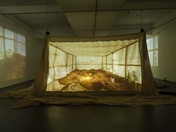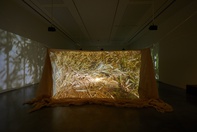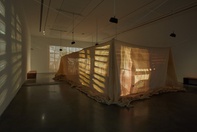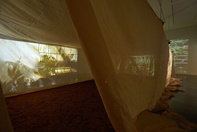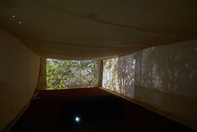Allison Chhorn
Tarndanya/Adelaide
2023
Displayed 2023 at Museum of Contemporary Art Australia
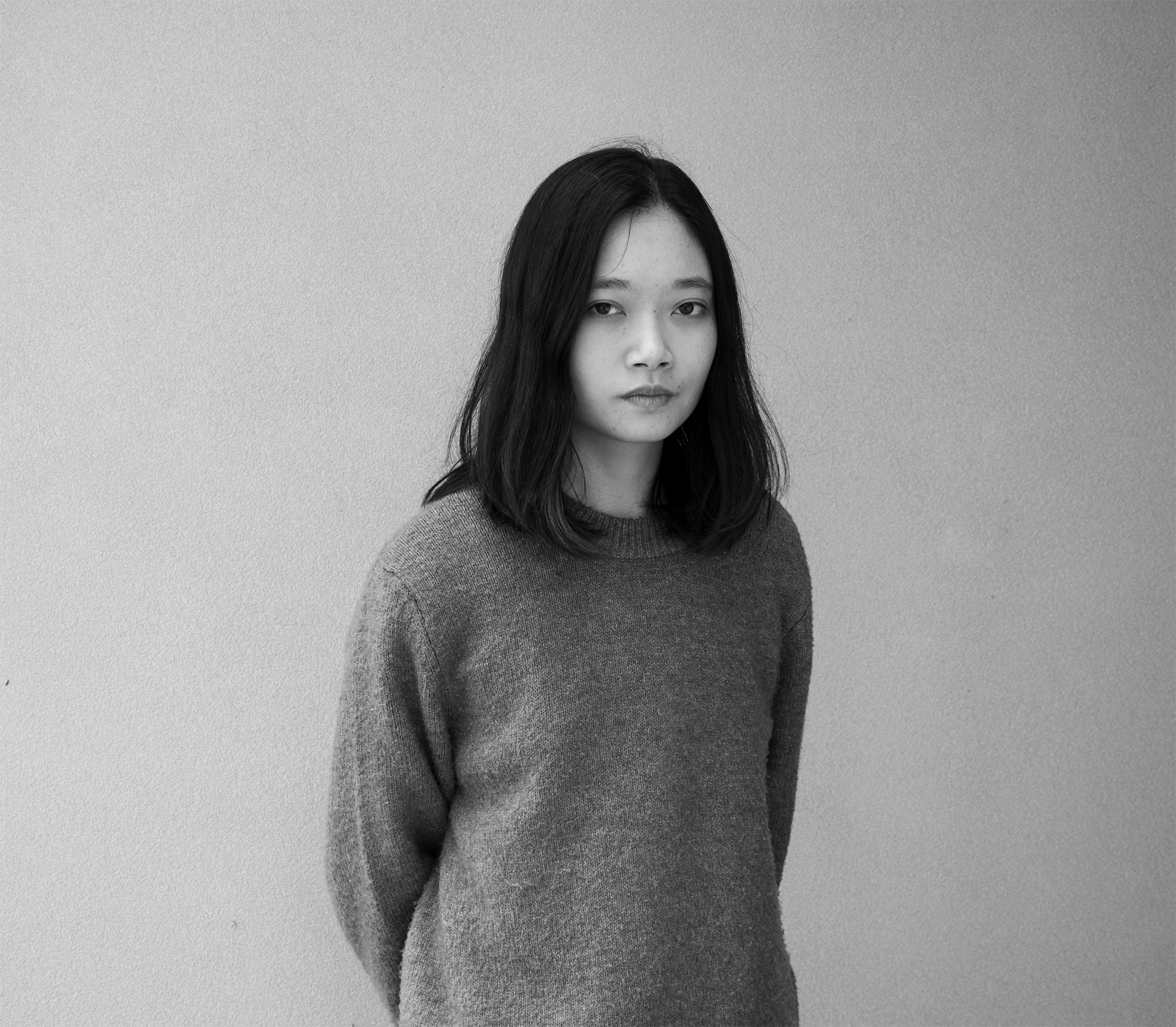
Allison Chhorn
Born 1992, Tarndanya/Adelaide
Lives and works Tarndanya/Adelaide
Allison Chhorn is a Cambodian-Australian filmmaker and interdisciplinary artist whose work explores histories of migrant displacement and trauma, often drawing on the experiences of her own family and the Cambodian diaspora. Chhorn’s films include The Plastic House (2019), Missing (2021) and Blind Body (2021). Her films have screened at the Visions du Réel film festival, Nyon (2020); the New York Film Festival, New York (2020); and the Sydney Film Festival, Sydney (2021). Chhorn’s work was exhibited in Extented, the 9th Asia-Pacific Triennial of Contemporary Art, Queensland Art Gallery | Gallery of Modern Art, Brisbane (2019). In 2014, Chhorn completed an Honours degree in Visual Arts (Painting) at the University of South Australia, Adelaide, and in 2022, she received the Porter St Commission from Adelaide Contemporary Experimental, Adelaide, for her first solo exhibition, Skin Shade Night Day (2022).
Photograph Credit: Lemuelle Chhorn
Image courtesy the artist
Artist text
by Patrice Sharkey
Long memory still remembers, but now short memory keeps forgetting.' (1)
As the daughter and granddaughter of Cambodian migrants, film-maker and multidisciplinary artist Allison Chhorn’s work explores the personal and familial ricochets of the Khmer Rouge – a brutal political regime that, from 1975 to 1979, claimed the lives of nearly two million Cambodians. Take, for instance, her 2021 short film, Missing, which opens with a photograph of her mother and her mother’s missing friend from the Khao-I-Dang Holding Centre , the longest-lived refugee camp situated on the Thai-Cambodian border. Or Blind Body (also 2021), an impressionistic portrait of her grandmother Kim Nay who, partially blind and showing signs of dementia, spends her days summoning the memories of a departed homeland. Alternately, The Plastic House (2019), Chhorn’s most internationally acclaimed film to date, takes a speculative turn by imagining what life would be like after the passing of her parents. In their own ways, each film speaks to the heart of Chhorn’s reckoning with the impacts of intergenerational trauma and cultural displacement: How do we make sense of the past and the present? And what is lost or forgotten along the way?
Chhorn’s most recent work, Skin Shade Night Day (2022), takes form as a multi-channel, immersive cinematic installation. Having completed formal visual arts studies in 2014, Chhorn moved towards narrative and documentary film quickly after leaving art school, with Skin Shade Night Day confidently marking her re-entry into the gallery space. Chhorn has created a multi-sensory experience that incorporates moving image, sound, and texture: ghostly projections cycle through the seasons (hot and hazy days, sudden downpours, evening winds), inhabited by shadowy figures and accompanied by a rhythmic soundscape (the clatter of domestic labour, sounds of nature, moments of eery stillness).
Skin Shade Night Day was inspired by a trip the artist took to Darwin in 2021 with her mum, where she saw a large shade house on a family friend’s property. The shade house captured Chhorn’s imagination and sense of responsibility to provide security for her parents, who had sold their fruit and vegetable farm a few years earlier. While her own family had a farming business based in humid greenhouses, Chhorn was drawn conceptually to the airiness and porosity of the shade house: ‘The purpose of the shade house is to protect the plants inside, and I see that as a direct metaphor for a domestic house, and the way that families create protection, ways that nurture the children and help them grow’. (2)
On her return to Adelaide, Chhorn built a shade house on the rental property where her family now lives, and, working with her parents, began cultivating a garden. For Cambodian migrants like her family, acts of service such as growing fruit and vegetables are about more than just producing food; they are rituals that link them to their culture. As a conscious act of embodied empathy, Chhorn immersed herself in her parents’ daily routines of farming and cooking, largely done by hand and unchanged since migrating to Australia over 40 years ago.
While the original shade house continues to be a working site, a new shade house in the gallery, replete with earth underfoot, captures the rituals lived, mediated, and transformed by Chhorn, which are as mesmerising as they are haunting.
(1) Monica Sok, ‘Letter to the Moon Regarding False Intimacy’, quoted in Allison Chhorn, Missing, 2021.
(2) Allison Chhorn quoted in Steve Dow, ‘The tricks and abstractions of memory and empathy’, Art Guide Australia, 12 July 2022, retrieved 27 October 2022, https://artguide.com.au/the-tricks-and-abstractions-of-memory-and-empathy.
Artist's acknowledgements
This project was commissioned by the Porter Street Commission through Adelaide Contemporary Experimental, and supported by the Government of South Australia through Arts South Australia.
The artist thanks Patrice Sharkey, Brad Lay, Alister Douglas, Dara Khiev, Steven Lehmann, Trudy and Aaron, and the Luscri, Comelli, and Chhorn families.
